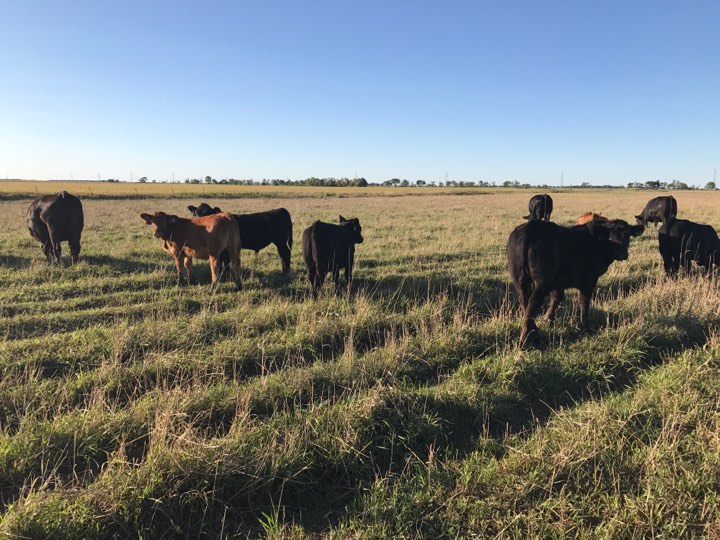New EPA rule stinks of manure
Cow-calf producers could soon be required to report manure emissions as mandated by the EPA.
December 29, 2017

When President Trump took office, he expressed plans to axe half of the Environmental Protection Agency (EPA). This promise was welcome news to the agricultural community after eight years of being bullied, sued and prosecuted by the overreaching government agency.
Almost a year later, more than 700 workers (of the 15,000 who were employed at the end of Obama’s two terms) have left the shrinking department, according to the New York Post. In October, it was reported the agency would also lose 30% of its budget.
In an investigation of the administration’s plans for the EPA, it was revealed that Trump plans to cut 3,200 positions (about 20% of the work force) to meet levels seen during the Reagan administration.
READ: Inside the mass exodus at the EPA
The agency itself is praising the changes, with EPA spokesman Jahan Wilcox recently speaking on the improved efficiency of the EPA. Wilcox said, “With only 10 months on the job, EPA Administrator Scott Pruitt is unequivocally doing more with less to hold polluters accountable and to protect our environment.”
Of course, these reductions in budget and personnel have been highly criticized by environmental activists who believe land should be managed by leaving it alone instead of properly grazing, logging and utilizing the natural resources we have available in this nation.
Yet, it appears even with fewer bureaucrats on the payroll and a smaller budget, whether intentional or not, the EPA is going to continue to be a thorn in the side of animal agriculture, thanks to the unrelenting efforts of environmental activist groups to undermine animal agriculture and put ranchers out of business.
READ: EPA expected to mandate use of 15 billion gallons of renewable fuels
Their current target? America’s beef producers.
According to a recent Capital Press article, “U.S. producers will spend an estimated $14.9 million a year reporting to federal emergency managers that livestock are releasing gas, the EPA disclosed last week. The EPA also projected that the mandate, set to take effect Jan. 22, will apply to approximately 44,900 farms, though producer groups say they’re still sorting out which operations will have to report.”
The new rule will change the scope of the Comprehensive Environmental Response, Compensation and Liability Act (also known as the Superfund law), which will treat manure like a hazardous substance.
Currently, the EPA is in a 10-year legal battle with environmental groups whether ranches will need to report under the Right-to-Know Act. The court favors the environmental groups, and with this win, if the rule moves forward, this could mean the reporting threshold would be 100 pounds of ammonia or hydrogen sulfide released in a 24-hour period.
This would impact every major feedlot in the U.S., but it could also apply to cow-calf producers with as few as 200 head of cattle.
According to the article, “EPA recently advised ranchers that manure from cows grazing in pastures outside enclosed areas will count toward the reporting threshold.”
READ: Farms to spend $14.9 million to report manure emissions
The vast majority of our BEEF readers have 100 head of cattle or more, so if you are reading this, you may soon have to report the manure emissions on your pastures.
Now, I understand concerns about climate change aren’t going to go away anytime soon, and despite the cars we drive, the energy we use to heat our homes and run our electronics, and the waste we create in our own homes, animal agriculture seems to make a good punching bag.
But let’s put things into perspective. In 2017, there were 93 million cows and calves in the United States. Yes, these animals produce waste, but they also convert poor grass on rough terrains into nutritious beef and by-products that we use. In a sense, the benefits outweigh and maybe even cancel out the environmental impact.
Let’s contrast these numbers to dogs and cats.
Americans own 89.7 million dogs and 86 million cats, all which produce waste but provide no quantifiable resources for us to use. In that regard, pet ownership should also be looked at as a contributor to global warming and climate change.
No, I’m not against having a domesticated animal as a pet (my family has a beloved dog and a handful of barn cats we care for), but I do think it’s a double standard to look at one aspect of animal ownership and not another when we look at environmental impacts. And before someone argues that cattle produce more manure than dogs and cats, let’s not forget about the plastic baggies for picking up pet waste that ultimately end up in landfills.
I’m hopeful once the dust settles in this court battle that this manure reporting for cow-calf producers won’t come to fruition; however, once the EPA posts updated rules in the Federal Register, we must show up to share our thoughts and be part of the discussion on the potential harmful impact of this change to the rule.
The opinions of Amanda Radke are not necessarily those of beefmagazine.com or Farm Progress.
About the Author(s)
You May Also Like




.png?width=300&auto=webp&quality=80&disable=upscale)
